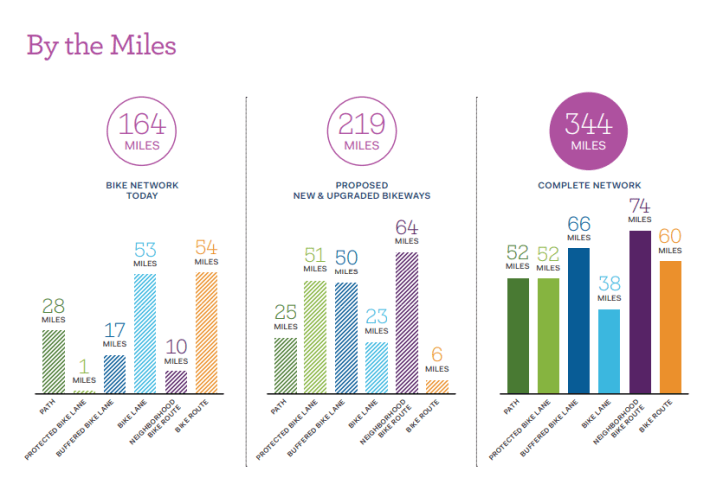In East Oakland, it's all but impossible to separate bicycle infrastructure from fears of gentrification and displacement. So when it comes to bike lanes "I still have questions about who it is for?" admitted Phoenix Mangrum of Cycles of Change, a bicycle education youth program founded in 1998 and based in East Oakland’s San Antonio district.
When Mangrum founded his non-profit, Oakland was still a majority Black city with no bike lanes--yet people of all stripes biked to get around. "In East Oakland, there were always kids biking--they weren’t going from deep East to downtown, but biking was a regular thing among all the kids."
Mangrum was speaking at a panel discussion about the 2019 Oakland Bike Plan and how it intersects with local culture, race, and advocacy groups. Through the new plan, Oakland's Department of Transportation hopes to put the majority of Oakland residents within a 1/4 mile of a comfortable and relaxed bike route that can connect them to their entire city.

The vision, as stated in the plan itself: "Oakland will be a bicycle-friendly city where bicycling provides affordable, safe, and healthy mobility for all Oaklanders. New projects and programs will work to enhance existing communities and their mobility needs."
But before that can be achieved, explained Lily Brown of OakDOT, the city has to overcome a sense of distrust of government earned by decades of neglect on the streets, felt especially in East Oakland. So to create a bike plan all can embrace, "the first part of the process is to listen," she said. "We held 60 community events over a year-and-a-half and spoke with 3,500 Oaklanders--and we have over 2,000 comments on our plan."
Outreach meetings were held at BART stations, libraries, shopping centers--and they were generally done with the cooperation and collaboration of local, established groups, including Mangrum's Cycles of Change and others.

City officials heard from community members who, said the panelists, took notes furiously and had much to offer. It also enabled OakDOT to explain that they would focus first on groups of Oaklanders who face the "greater vulnerabilities and disparities in the transportation system," as stated in the plan itself.
These groups include, also according to the published plan.
- People of color
- Women
- People of no- and low-income
- People with limited English proficiency
- People with disabilities
- Children and seniors
- Single parents
- People who don’t own cars or do not drive
The plan was based on that feedback. But writing it, in effect, was the easy part: now it's going to come down to delivery. "My point of view is okay, let’s make the changes, but I’m going to hold you accountable," said Baybe Champ of The Original Scraper Bike Team. "I have trust issues and the best way for me to get over them is through execution."
"You have to make up for deep disinvestment in East Oakland," said Keta Price of the East Oakland Collective. And sometimes that means fixing potholes first in long neglected neighborhoods, to regain trust in government. As the panelists explained, when people live on neighborhood streets where the pavement is so bad they have to get mountain bikes, they have a different sense of what bike safety means.
"Yeah, it’s cool that you have the main bikeways, but to get to that main bikeway it can be impossible because of all the potholes," said Price. That came out in the community meetings, where African American cyclists also express frustration with getting singled out for police stops, also known as "biking while Black."
"Racially biased policing is also a barrier to biking in Oakland," said Brown. "We incorporated that data."
However, the group seemed confident these inequities can be overcome and Oakland will see vastly improved bike infrastructure over the next few years.

"In deep East Oakland, only 17 percent of people have access to safe and comfortable biking," said Brown. "When this is built out, that will be 99 percent."
Be sure to check out the plan and attend the hearings to consider its adoption by the city. The first one is next Wednesday, June 19, 6-8 p.m., Oakland City Hall Council Chambers, 1 Frank Ogawa Plaza.
For more events like these, visit SPUR’s events page.





